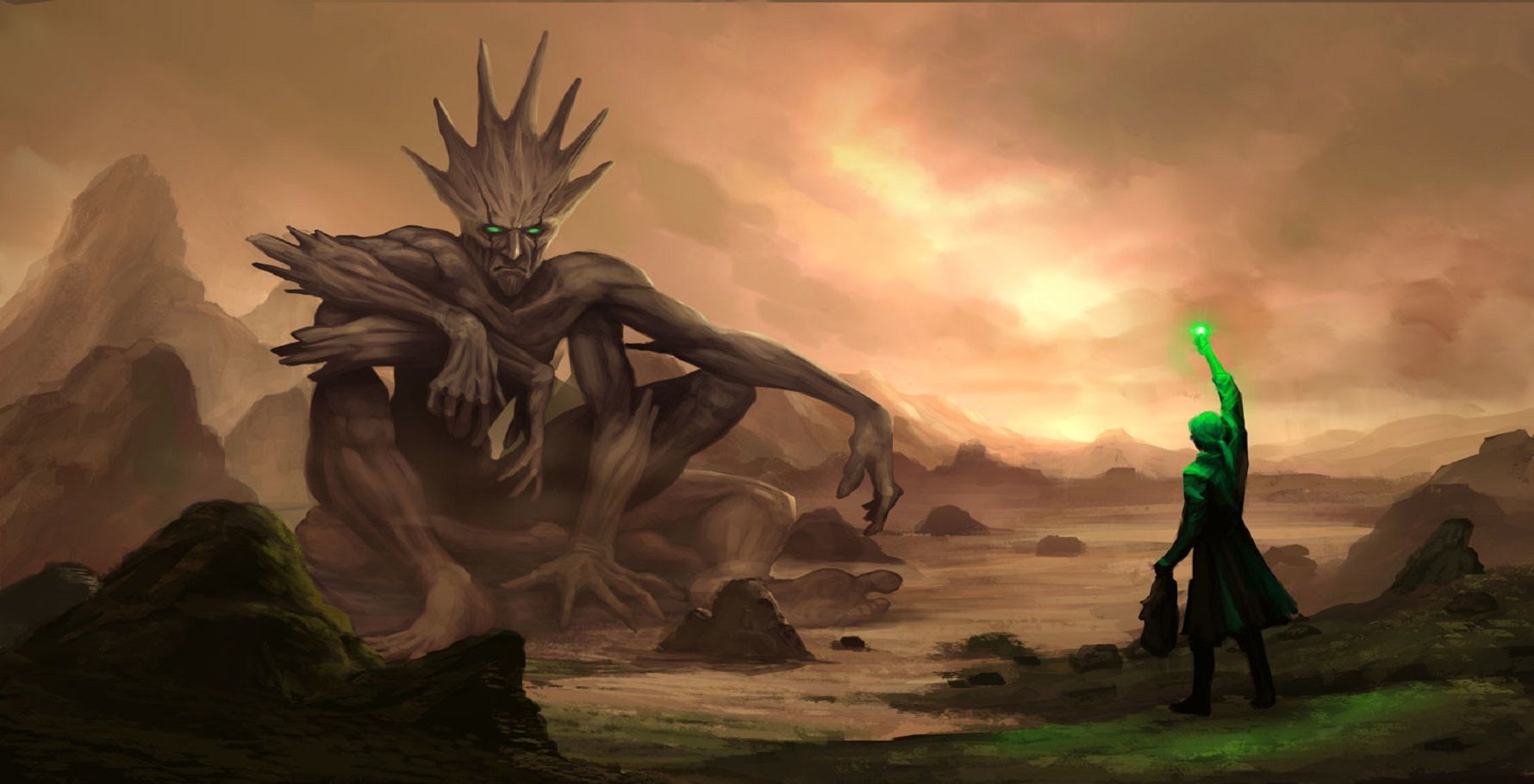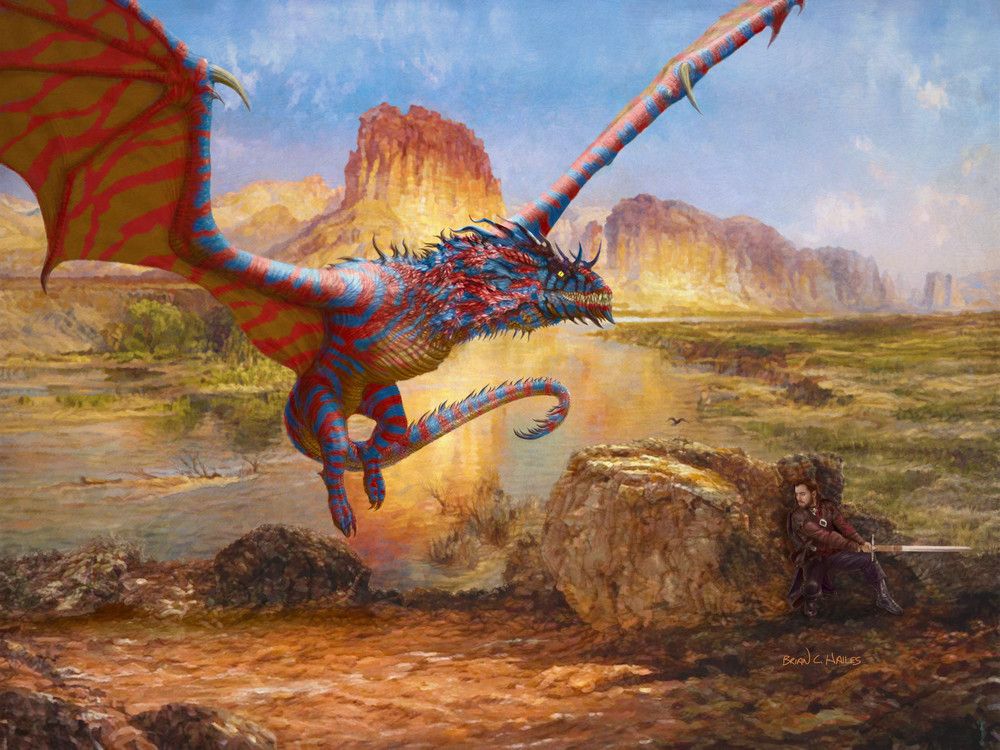If you’re a Dungeon Master, you know that there a lot of things that go into running a campaign of any size. There are scenarios for just about every taste: high fantasy, lots of magic, vampires, mystery/intrigue, dungeon crawling... the list goes on and on. However, what if the published material doesn’t quite fit your needs? What if it's missing that “something” you can’t quite describe?
Or, what if you have your own grand idea for a campaign but aren’t sure how to make it happen? Hopefully, this list and its varied fantasy art will be able to give you a jumping-off point and inspiration to create your own world and story from the ground up.
10 Decide On a Theme and Tone
First things first, when you set out to create your own world in which to host a campaign, you need to decide on the theme and tone you want everything to have. Is this a dark and gritty world where the characters are faced with hard choices and harsh realities? Or is this a more light-hearted world where a group of close friends head out on a quest for fun?
If at all possible, you should have a small conversation with your players and talk about what they're comfortable with and what they would like. Some people might not feel comfortable with darker, more serious or graphic themes, while others might be fine with it.
9 Decide On Size and Scope
Determining the size and scope of your world and campaign will be pivotal to the rest of the planning. Will the story take the players on an odyssey across the multiverse or will it be confined to a single country? Also, is this going to be a one-off adventure that your group can complete in a few hours or are you crafting a game that everyone will be playing for months?
If it's your first time, it might be easier to start with a small-scale world and story. If all goes well, you could then expand the world and link the end of the small romp as the beginning to a new, grand adventure. Remember, bigger isn’t always better, and complex isn’t always best.
8 Decide On Any Special Rules
Since you are making your own world, it doesn’t necessarily have to be bound by traditional Dungeons and Dragons rules. While its recommended that you keep the same rolling system and nuts and bolts of the base game to make things easier, if you think you have a great idea and can make it work, do it!
For the less adventurous, think about small unique rules that could possibly tie into your campaign or the history of your world. Are certain races not playable? Does magic exist? Are steampunk weapons and gadgets allowed? These rules are important and be sure to give them to your players so they can prepare and play properly.
7 What Is The History of the World?
So, you’ve decided to create a whole world from scratch. Now you have to draw maps, create and name countless things such as landmarks, countries, kingdoms, etc. Try rolling a few dice to decide on just how many of these things exist in the world. If there are multiple countries in your world, how do they interact with each other? Are countries made up of one race and constantly fighting? Is everyone mixed together in harmony?
Another thing to consider is major events that have happened in your world, such as wars, plagues, surges of monsters, or the rise of a supervillain.
6 How Will Your Players Fit Into The World?
Having major historical events in your world give something to help your players create characters that fit in. However, more likely than not, these events would fall into characters’ backstories. What about the present? One of the hardest parts about crafting your own world and campaign is figuring out how everyone meets.
Published modules begin with all the characters already in the right place. You can use these for inspiration, but if you want to craft your own, the best way to do it is to involve your players. As you help them create characters that fit the history and theme of your world, slowly but surely a picture will evolve about how everyone comes together.
5 What Is the Catalyst For the Adventure?
Every well-written story has a point where the hero/es is/are called to action. From a player standpoint, this is one of the most important parts of playing a homemade campaign set in a homemade world. This is the moment where both character and player become invested in their reasons why they are on this journey and why they are traveling with the group.
Your catalyst could affect each character differently. Perhaps they are each looking for something different or want the end goal for their own reasons. In contrast, the catalyst could serve to unite this group in a common goal.
4 Have An Outline but Don’t Get Too Detailed
When crafting a campaign, you are crafting an interactive story. All stories have a beginning, a few key events in the middle, and an end. So, plot out the two points you have the most control over the beginning and the end. The beginning is quite important, but the end is almost more important. The end is the goal that everyone is working towards.
So, consider your catalyst and the events it will set in motion. How would a happy ending take place? Is there a villain to defeat or a disaster to stop? Do they need to find a special item? How is that accomplished?
3 Make and Keep Detailed Notes About Your World
Once you’ve decided upon the major points of your world and campaign, it's time to start making detailed and organized notes. More likely than not, your players will have constant questions about the world: what is allowed, what is not allowed, would their characters know what is normal for the world?
After all, they are strangers in this place you’ve created, while it's probably been bouncing around in your head for weeks. So, write down everything you can think of and try to keep it organized in some fashion for easy reference in the heat of the moment.
2 Give Your Players As Much Background Information As Possible
Once you sit down at the table to start playing, it's a good idea to have a session zero. Session zero is time put aside to clear up any confusion and answer questions. Often session zero is when characters are made together so the party works well together.
This time will be crucial to inform your players about everything they need to know about your world; going over the map, any special rules that apply, the history of the world and any other important information. This will allow your players to immerse themselves and better form their characters to fit into the world you’ve worked so hard to create.
1 Be Flexible
One of the biggest challenges to this whole endeavor is trying to strike a balance between guiding your players along with the storyline with enough freedom to make choices and have fun and forcing them to take a fixed course with no deviations.
The former practice, sometimes referred to as “railroading,” can suck the fun out of the game for everyone; the players feel they have no control and you as the dungeon master are frustrated that your story is being ‘ruined.’ So, keep things broad and loose, plan only one or two sessions ahead and be prepared to improvise and think on your feet.










